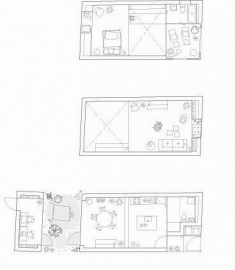Townhouse
The narrow site is sandwiched between old buildings in Landskrona, Sweden. Though nicely situated by the beach in a growing region, this city has become notorious for its social problems, originally set off by the wharf industry crisis in the 80s. Our lot has been empty since mid 1900s. It is barely 5 meters wide with a tiny area of 75 square meters, facing a street but also a colorful hidden world inside the city block. We wanted keep a strong presence of this small-scale, motley, naturally worn place in the completed project a feeling of almost being outdoor.
Immediately adjacent buildings are low, but the street is lined with buildings of various height, size, facade material, age, and approach. After careful study of the site dimensions through physical models, we reached the conclusion that the site was so small that a rectilinear approach would enrich the street with a novel feature, a syncopation of its rhythm, while staying sensitive to the environment. We wanted to create a sharp contrast; to express inherent clarity, but more importantly to highlight the beauty of the surroundings.
Our clients, a couple dealing with art and running a café, plan to settle here for good. As they want to use the house as a private gallery, they need walls for art, not for privacy. We made a single space, softly partitioned by thin exposed steel slabs. These span the entire width of the house and divide its program kitchen, dining, living, library, bed, bath, and a roof terrace. A home office is located in a separate building across a small garden. Mechanical and service spaces fit next to the entrance. Gross area is 125 square meters.
This simple system creates an array of different spatial experiences in this very small project. It aims at a non-minimalistic and lively sequence of confined and airy spaces, niches, interiors and exteriors, horizontal and vertical views as well as carefully framed views of the site. The continuous interior space is opening up to the street, to the middle of the block, and to the sky above.
Energy consumption 57% lower than the regulation was reached through the use of an air-source heat pump and a ventilation system with heat recovery, wall construction of LECA sandwich blocks with EPS insulation inside, and a sedum roof delaying temperature fluctuations between day and night. The wall construction is, except for being ideal to build right up to the neighbors walls on this difficult site, fully breathable, needing no vapor barrier, and exclusively composed of materials that cannot mold.
Though these technical aspects are important to a responsible architectural practice, we find that our process is sustainable in a wider sense. We have taken great care to thoroughly study everything from all imaginable dimensions, light, transparency, spatial sequences, domestication of street space, and, of course, detailing. Only this way, we can truly challenge the task, the site, the client, and persisting conventional thought being bold and sensitive at the same time.

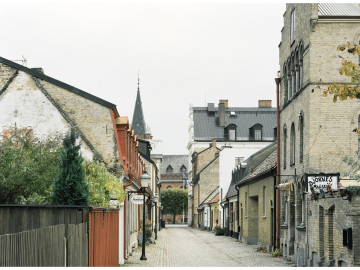
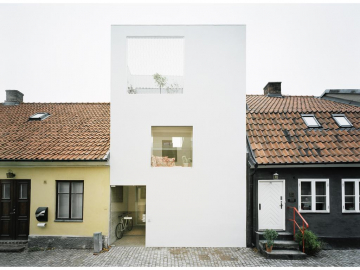
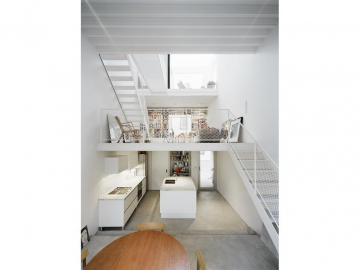
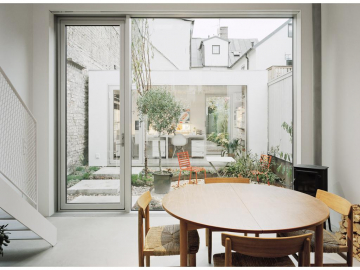
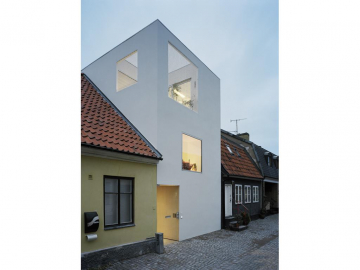
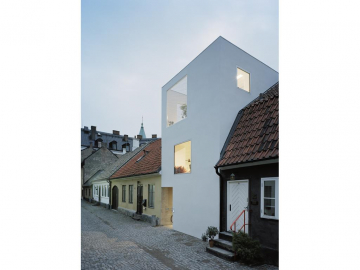
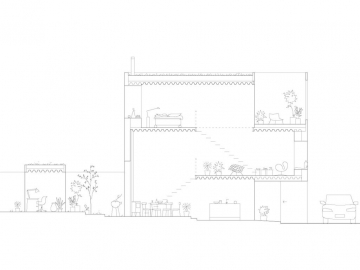
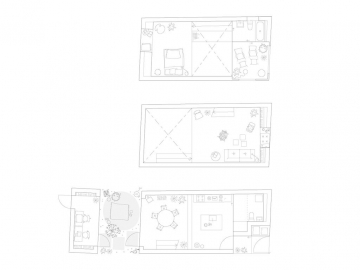
 copy.jpg)
